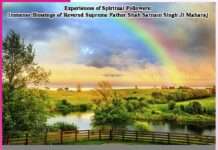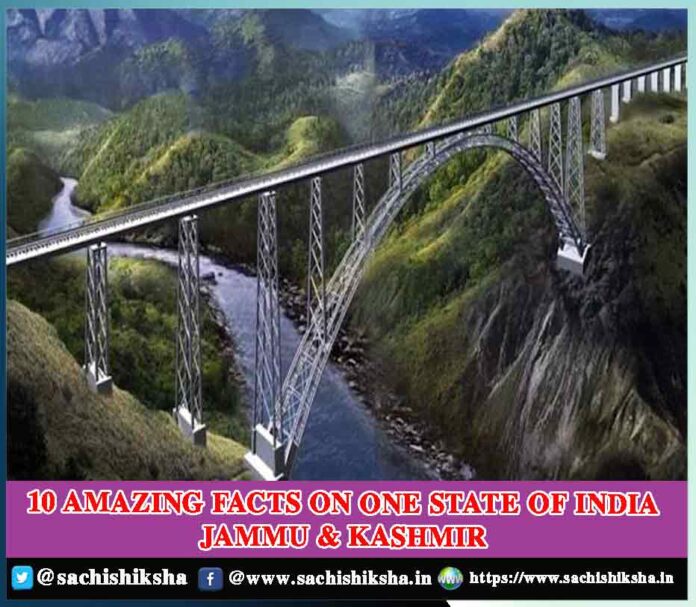Jammu & Kashmir most commonly called ‘The Heaven on Earth’ is popular all over the world for its scenery, snow-capped peaks, misty hills, exquisite wildlife, beautiful monuments, local handicrafts and above all hospitable and humble people.
Situated in the Karakoram, Himalayan and Pir Panjal mountain ranges it is sculpted naturally with beautiful blue lakes, rivers, lush green forests covered with pine & deodar trees. The holy religious places like Vaishno Devi & Amarnath receive many pilgrims from all over India. Kashmir Valley, Dal Lake, Gulmarg, Sonemarg, Shalimar & Nishat Garden attract tourists in abundance. After the removal of Article 370 & 35A Jammu & Kashmir took a first grasp of fresh air which was long awaited for the past 70 years. It is now a part of united India.
- Kashmiriyat, that prevails in Jammu & Kashmir is the popular name for the syncretic culture which has ideas from Hinduism, Buddhism & Islam mingled together. Oneness of all Kashmiris without taking into account the creeds is represented by Kashmiriyat and is a prime characteristic of Kashmir. King Ashoka who was a strong believer and follower of Buddhism founded the state capital Srinagar. It is believed that some sort of connection with the legendary Silk Route might have been created as it is adjoining the lands of Afghan. All the generations of Kashmiris were united as it was founded on the basis of social brotherhood. ‘All roads lead to a common single path’ is the belief of syncretic culture towards all the prevailing religions.
- Maharaja Hari Singh from Dogra dynasty was the last Maharaja of Jammu & Kashmir. During his tenure there was much turbulence in Kashmir as Sheikh Abdulla became the leader of masses and a great disorder and rebellion started. Although he wanted to rule independently, Hari Singh was an exuberant person who found it hard to control the protests. Most of the people wanted to be in the Pakistan that was newly formed, minority wanted to be in India but some people wanted to be independent and he established himself as an independent ruler. He was the last ruler who left a blood stained history after being attacked by the Pathani mercenaries and rescued by the Indian Army.
- The main language of Jammu & Kashmir is Kashmiri which is of Dardic group, a type of language isolate. Other languages spoken in the state are Urdu in the valley, Shina specifically in Ladakh, Balti, Dogri, Pashto, Ladakhi, and Gojri. Being an accommodating land for different civilizations it is fertile. There is a scintillating presence of such broad languages as Urdu and Pashto, Punjabi and Dogri. Hence it is a rich society by virtue of different stimulating diverse languages.
- Jammu & Kashmir is geographically a diverse state with widespread mountain ranges and beautiful lively rivers like Jhelum flowing through the valley. Dras is the coolest place in India which is inhabited and second coolest place on the earth having temperature as low as -45℃. Among many passes Zoji La pass which is a strategic pass between Kashmir valley and Ladakh and hence very important, is the most famous and is visited frequently by the soldiers.
- It is the best architectural miracle designed by nature where the nature’s poetry sets out on a quest to infinity. Shikara (a wooden boat) in the rivers and lakes add to beauty; the Pehran, a unique dress, Kangiri an earthen fire pot which is wrapped in woven mesh, Samovar a special copper kettle, the Pashmina which is famous world over and the other local handicraft items are all beautiful and carry a freshness and uniqueness. The floating market of Srinagar which is a major tourist attraction is one of its kind in India and the third in Asia. Being the major economic attraction it is the largest saffron producer in India and third in whole world.
- Jammu & Kashmir is known for having the longest railway tunnel in India and fourth longest one in Asia. It is called Pir Panjal or Banihal railway tunnel which is 11.215 km in length, 7.39m in height and 8.4m in width.
- Wazwan, a 36 course meal is the traditional cuisine from Jammu & Kashmir which has a great influence from Arabic and other cultures existing there. The tourists savor the different flavors of
- It is single state with two capitals where Jammu is the winter capital and Srinagar the summer capital. The most sought after destinations for tourists are Srinagar, Pahalgam, Gulmarg, Sonmarg and Amarnath cave. The ruins from Martand Sun Temple that was built around 8CE are also a belonging of this state.
- The Chashme Shahi, an ancient Mughal Garden was built in 1632 AD. Itbhas a spring where water oozes out & it is believed to have medicinal properties. The Chenab Bridge is made of steel and can bear temperatures up to 20 degrees. The Hazratbal Shrine is assumed to have the hair strands of holy prophet Mohammed. The beautiful Wular Lake is one of the biggest freshwater lake in Asia.
- The Gulmarg Gondola in Gulmarg is the longest ropeway in India that runs up to 5 kilometres. Chenani-Nashir Tunnel is the longest road tunnel in India which is 9.2 kilometre long. The largest Tulip garden of Asia is the Indira Gandhi Memorial Tulip Garden, the Raghunath temple in Jammu has more than 6000 manuscripts of different languages in India. The State bird is Hangul and the state animal is the black necked crane.
The train whistling and buzzing, piercing the mountains covered with snow, the beautiful shikaras, the floating markets, the pine trees, the deodar and the chinar, the bluest lakes the beautiful Shalimar & Nishat gardens all justify the state of Jammu & Kashmir being the Paradise on Earth and is an Integral part of India.
Follow us on Facebook, Twitter, LinkedIn Instagram, and YouTube to get more updates related to Sachi Shiksha – The Famous Spiritual Magazine in India. Also Read Our Hindi and Punjabi Editions.
















































